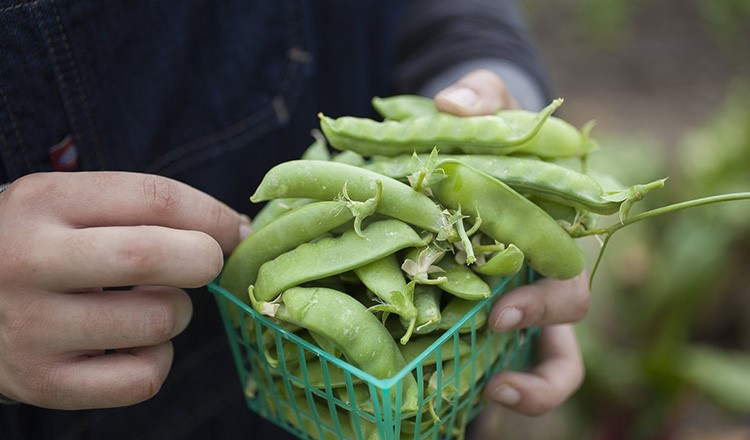
In the food world, when we say “protein,” we’re often referring to the meat or fish component of a dish. Historically, the protein is the main focus of a recipe, and it is accompanied by side dishes, like vegetables, grains, or starches.
But as we (foodies both at home and in the restaurant industry) come to embrace the benefits of a plant-forward diet, the focus is shifting from animal proteins to other natural sources: plants!
Sure, we all know that beans are a great source of protein, but for a long time, the bean-eating vegetarian has been a stereotype that keeps many folks from joining their ranks. And while we’re not here to tell you how to feel about beans (spoiler alert, though: we love them!), we do think it’s important to mention that beans are just one of many sources of plant-based protein. And some of them may surprise you!
Legumes in general are great sources of protein, so in addition to your everyday beans, this includes soy beans and products (like edamame, tofu, and tempeh), lentils, and peanuts. Yes, that also includes peanut butter!
Nuts are high in protein, and a handful of nuts (about 1/4 cup) is roughly equivalent to a hard-boiled egg, depending on the nut. Almonds, pistachios, are cashews are the highest in protein, but other nuts added to dishes, like in stir-fries or salads, are an easy way to sprinkle in added protein. And don’t forget peanuts, which while technically a legume, are high in protein and inexpensive, to boot.
But what about vegetables? Veggies are not especially high in protein, meaning you can’t eat a cup of broccoli to satisfy your protein needs for the day. But they are high in protein compared to their calorie content, meaning they are nutrient-dense. As part of a balanced diet, with grains, legumes, and fruits, vegetables can help round out your protein needs.
Greens are a great source of protein, not to mention other essential vitamins and minerals. Look to spinach, watercress, collards, and mustard greens. Other great vegetable-sources of protein include broccoli, Brussels sprouts, cauliflower, and asparagus.
You may hear people talk about “complete proteins.” Proteins contain a number of amino acids that our bodies need, and only some protein sources contain all of those amino acids. They are complete proteins. Meat, poultry, fish, eggs, and dairy are all complete proteins, alongside some plant sources, like quinoa, buckwheat, soybeans, and blue-green algae (that’s why it’s so popular in smoothies!).
Other plant sources contain some of these amino acids in different combinations, which is why it’s so important to eat a varied diet containing fruits, vegetables, grains, and legumes. You don’t need to eat complete proteins to get all of these amino acids in a day, but you need to eat all of the components. Luckily, it can be as easy as pairing rice and beans or whole grain bread and peanut butter. Odds are, if you’re eating lots of different protein sources in a day, you’re getting the right kinds of proteins. Of course, if you’re not sure, it’s always wise to check with your doctor or nutritionist.

Due to a variety of reasons (all health related: blood pressure, cholesterol, skin issues) I am seriously considering moving to a plant-based diet and really getting away from animal protein and dairy. Do you have suggestions as to where I should look for recipes, cooking techniques, etc.?
Hi there! We’ve got lots of plant-forward recipes right on this site! Search “plant-forward” to find our favorites. As for cooking techniques, you don’t need to know anything new to eat plant-forward! Roasting, sautéing, braising, steaming… these are all great ways to cook your favorite veggies and plant-based ingredients. Our book, Cooking for Special Diets, has some great information about learning to make swaps and incorporate more whole grains, healthier fats, etc. It’s geared toward a professional audience (so you may want to pick up a scale to weigh ingredients, if you don’t have one), but the recipes are generally very simple and straightforward.